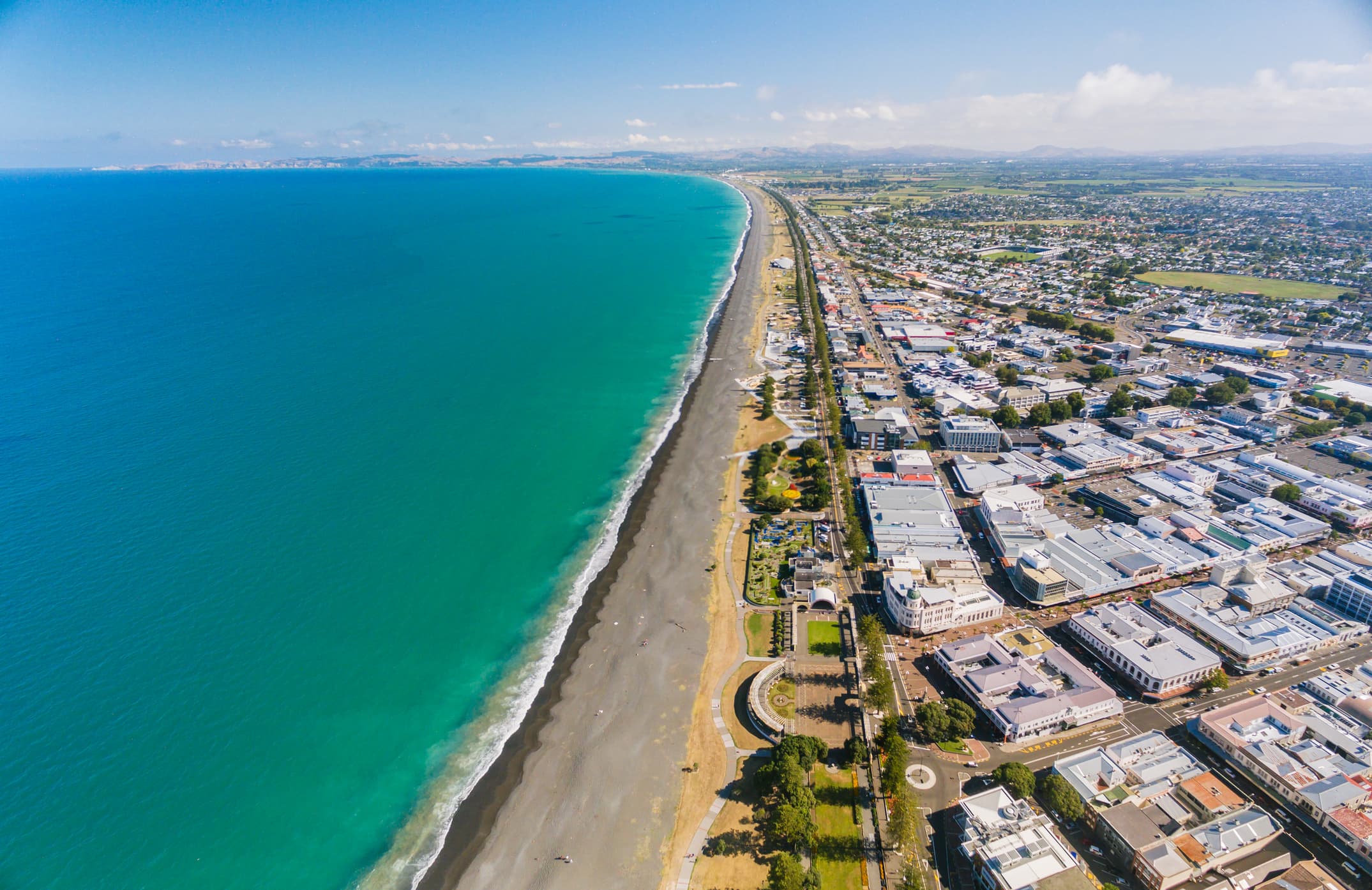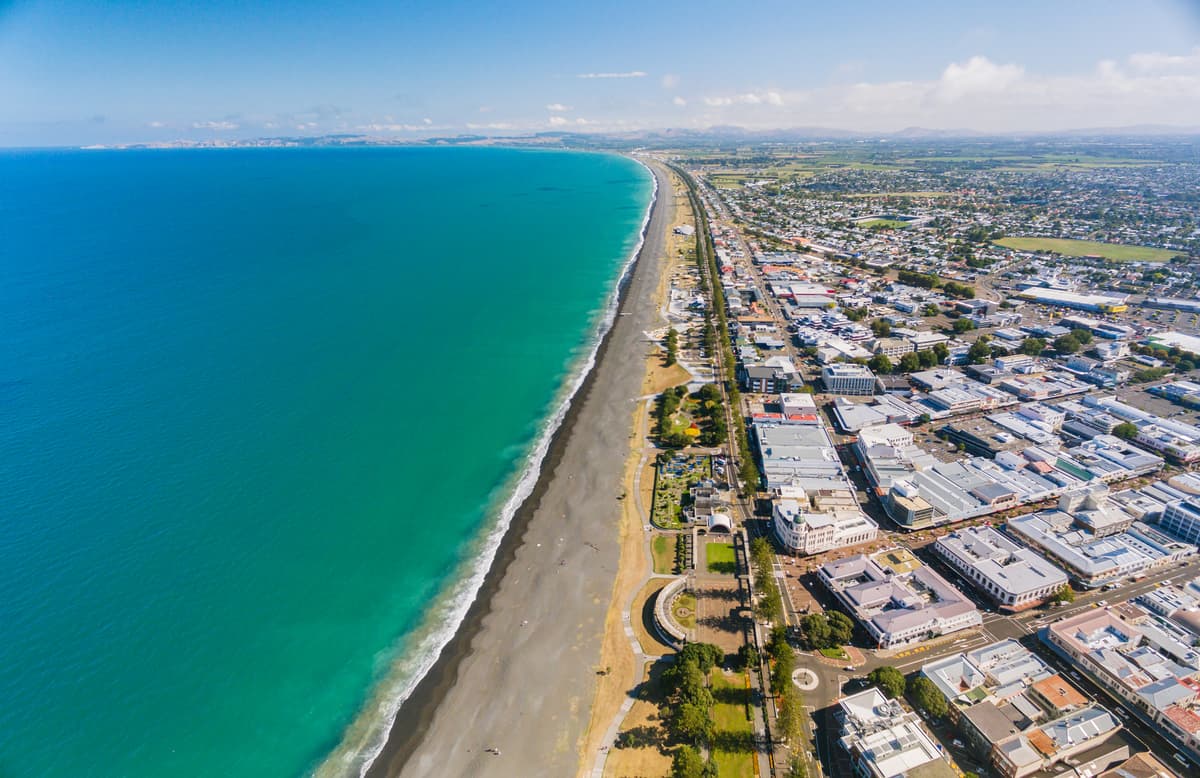

Posted on Tuesday 2 August 2022
Marine biologist Anna Madarasz-Smith is Science Manager at Hawke’s Bay Regional Council. She’s part of the team working with Sustainable Seas through the Hawke’s Bay regional study. The project is working with stakeholders and iwi partners to take an ecosystem-based approach to local marine management.
Most people aren’t lucky enough to see below the surface of the sea, so can’t appreciate its important intricacies, Anna Madarasz-Smith says.
“It’s like looking at the land through a layer of clouds when you’re in a plane above the cloud line.”
As a keen diver, she feels privileged to have seen what lies beneath.
“It’s a beautiful and fascinating world. The pressure it’s under and how we could do things better needs to be highlighted.”
A love of the ocean, analysis, and finding out why things happen is what led to Anna becoming a scientist.
“I’ve always had a strong affinity to the ocean. I grew up around beaches. I grew up around rock pools, and the extraordinary life that lives in them.
“I need at times to smell the sea, it’s an important thing for me. If I get a bit itchy, I need to smell the sea, immerse myself in the sea. Being underwater you realise how lucky you are to be seeing something and experiencing something so few people do.”
Despite most New Zealanders having a close connection to the coast, Anna feels many don’t understand the negative effect they can have on the moana.
“It's considered so vast that surely we can't be actually impacting it - but we are. It carries a lot of burdens.
We need to be aware what those burdens are, she says, particularly as some come from our own backyards.
“Everything we do on land impacts our oceans. The water that you wash your car in or hose your paintbrush off with will go into your local river or harbour without any treatment whatsoever. The sediment that you generate because you want to do some landscaping, or you’re building a house, that is all going to go into the waterway, then our estuaries and marine space.
“Every single person, whether they’re urban or rural – we’ve all got a responsibility to understand how our actions impact our marine environment.”
But, as she says, people can only see what’s happening above the sea’s surface.
“They're not diving down underneath, they're not seeing the animals and plants, so they can't see the problems.”
Last year, a balloon decorated with the characters from the children’s film Frozen was found in the Mariana Trench, the deepest part of the ocean. The film came out in 2013.
Anna says: “For that balloon to make its way from us as humans to the deepest darkest part of the ocean in eight or nine years absolutely highlights that we can affect the ocean and we are, with climate change and ocean warming, ocean acidification. We must be even more careful and keep the health and wellbeing of the ocean at the front of what we do.”
Anna describes our moana in Aotearoa New Zealand as “struggling”. She says it may not be at the level of concern as freshwater, but that could be because we aren’t looking deep enough.
“We’ve been monitoring freshwater for 40 years. But regional councils have only been looking at the ocean for the last 20.
“In our estuaries we’re seeing a huge amount of stress. We’re certainly seeing it in our marine space, and in the benthos, the animals and plants that live on the sea floor. It takes longer to potentially impact the ocean than it does your local river, but it will take longer to bring it back to health again.”
“It's much more effective to stop things from falling over than it is to try to bring them back. Let’s not wait until there’s a tipping point, let’s get in there early.”
This is what the Hawke’s Bay Regional study hopes to help achieve.
It’s a collaboration between Sustainable Seas, and the Hawke’s Bay Marine and Coastal group (HBMaC). HBMaC is a multi-stakeholder group that includes the Hawke’s Bay Regional Council, government agencies, tangata whenua, and recreational and commercial fishers.
Anna says the vision for HBMaC is to work towards a healthy marine ecosystem which underpins an abundant fishery, so it made sense for Sustainable Seas to join the collaboration.
“HBMaC had the group, and the desire and impetus to work together, to work out how to make better decisions. Sustainable Seas had the skill and the knowledge and the work within ecosystem-based management and how to get that off the ground.”
Stage one of the project mapped two environmental stressors in the Hawke’s Bay marine environment: freshwater sedimentation and the loss of benthic (seabed) structure, and how the two interact.
Anna says the next stage is to look at what would happen if the stressors in that environment changed. “If we turned down some of the sediment entering the marine space and if we become more efficient at fishing - how does that look for the recovery of our benthic system?”
